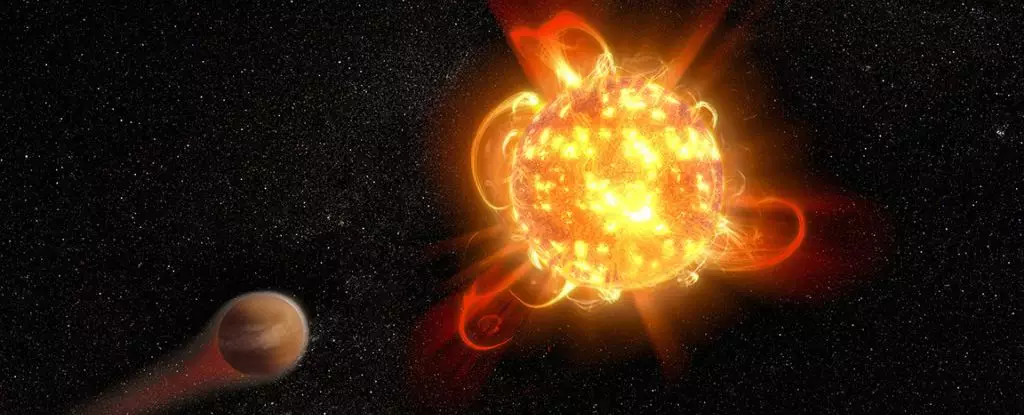M-class stars, more commonly recognized as red dwarfs, are often seen as the gentle giants of the universe. Characterized by their cool temperatures and modest sizes, these stars burn their nuclear fuel at a remarkably slow rate, granting them lifespans that can stretch into trillions of years. This longevity, coupled with their prevalence — consisting of about 70% of the Milky Way’s stellar population — positions them as potential havens for extraterrestrial life. The idea that planets revolving around red dwarfs could feasibly harbor life has captured researchers’ imaginations, given their potential habitable zones.
However, this rosy perception of red dwarfs may need to be reevaluated. Despite their stability, these stars are notorious for their energetic activities, especially the occurrence of frequent and intense stellar flares. While earlier studies hinted at these flares being problematic for planetary atmospheres, a recent paper has unveiled startling new insights that deepen concerns regarding the habitability of planets orbiting M-class stars.
The research in question draws from a decade’s worth of observations taken using the now-inactive GALEX space telescope, focusing on data from approximately 300,000 stars. Out of this vast database, the scientists concentrated on 182 specific flares linked to M-class stars. Notably, this study shines a light on ultraviolet (UV) radiation produced during these stellar events, an area that had previously been overshadowed by analyses of light in the optical spectrum.
By scrutinizing the emissions in both near-UV and far-UV ranges, researchers aimed to reveal the impact of UV radiation on planets inhabiting red dwarf systems. While UV radiation can play a role in aiding the synthesis of essential organic molecules — often viewed as precursors to life — excess exposure could spell disaster. High-energy photons, stemming from stellar flares, possess the capacity to strip away planetary atmospheres, undermining the very conditions necessary for sustaining life.
The findings shed light on the nature of UV radiation emitted by stellar flares, indicating that previous models may have significantly misrepresented their intensity. Historically, researchers modeled the emissions from flares by depicting them as following a blackbody distribution. This conventional approach established a baseline temperature for the stars, approximating 8,727 degrees Celsius (15,741°F). Yet, the new study reveals that a staggering 98% of the analyzed flare events produced UV outputs far exceeding those projected by these traditional models.
The implications of this revelation are substantial. If the stellar radiation from flares is indeed more intense than previously understood, it raises crucial questions about the genuine habitability of planets circling red dwarfs. Even if a planet is situated within the temperate range conducive to liquid water and has the surface conditions necessary for life, it may still face an unwelcoming environment due to the high levels of UV radiation emitted during flaring events.
The combined findings suggest a significant paradigm shift in how scientists evaluate the potential for life on exoplanets around red dwarfs. Traditional criteria for habitability often focus on factors such as temperature, atmospheric composition, and the presence of liquid water. However, the intensity of radiation from stellar flares must now be integrated into these assessments to provide a more accurate picture of the risks potential life forms could face.
The increased incidence of lethal UV radiation could serve as a formidable barrier to the persistence of life. While some planets might otherwise meet conditions for habitability, the adverse effects of extreme stellar flares could negate any advantages their environments might promote. Consequently, potential extraterrestrial lifeforms within these systems may be subject to environments that are far more hostile than previously assumed.
The revelations regarding M-class stars and their associated flares serve as a clarion call for the scientific community. As we probe deeper into the cosmos for signs of life, it becomes imperative to revisit our definitions of habitability and incorporate new findings about stellar phenomena. For red dwarfs, while they remain an intriguing target in the search for extraterrestrial life, the threat posed by UV flares could redefine our understanding of where — and how — life might thrive in the universe. As the quest for knowledge continues, it is vital to balance optimism with the recognition of the potentially hazardous realities that accompany these common yet complex celestial bodies.


Leave a Reply